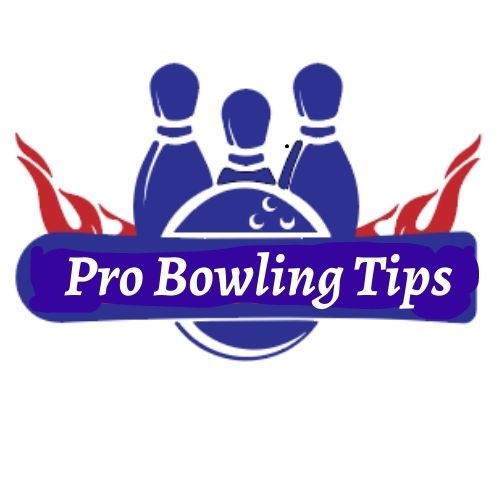Backup Bowling is an intriguing technique in Bowling. Unlike conventional approaches, it intentionally generates a hook in the opposite direction. For right-handed bowlers, the ball takes an unexpected turn to the right, while left-handed players witness a graceful leftward curve.

This unusual style offers a distinct challenge to tradition and is a valuable tool in a bowler’s arsenal. When mastered, it allows for seamless transitions between right-handed and left-handed techniques and proves indispensable for converting spares on a bowler’s dominant side of the lane.
Let’s now get into the article to find out more about Backup ball in Bowling.
What is Backup Ball in Bowling?
A backup ball in Bowling is a unique delivery that curves in the opposite direction of a standard throw. For right-handed bowlers, the ball hooks to the right, achieved by rotating the wrist clockwise instead of the usual counter-clockwise motion for a typical hook shot.
The backup ball creates a reverse spin on the ball, which causes it to curve in the opposite direction. Bowlers employ the backup ball for specific advantages.
It alters the angle of attack on the pins, often making a more direct impact, which proves beneficial when pins are tightly stacked. Additionally, it helps circumvent lane oil, preventing excessive hooking and maintaining a straighter path.
How to Throw Backup Bowling Ball
To throw a backup Bowling ball, select the appropriate ball and keep your hand straight with your elbow closer to you. Apply a firm grip and, if desired, throw a backup ball with both hands. Finally, at the moment of release, spin your wrist clockwise to throw a Backup Bowling ball.
That said, mastering the art of throwing a backup Bowling ball requires a unique technique that can be perfected through practice and attention to detail.
Here’s a precise guide on how to execute this distinctive Bowling maneuver:
Ball Selection
- Opt for a ball designed for backup Bowling, featuring a more aggressive core and coverstock, enabling enhanced hook potential.
Grip
- Employ a firmer grip than a traditional hook shot to ensure a secure hold on the ball, minimizing the risk of it slipping from your hand during the release.
Approach and Timing
- Execute your approach with the same mechanics and timing as you would for a regular hook shot, maintaining a consistent and controlled pace.
Wrist Rotation
- As you approach the release point, rotate your wrist in a clockwise direction (for right-handed bowlers) or counterclockwise (for left-handed bowlers).
- This imparted rotation on the ball will induce a hooking motion in the opposite direction, distinguishing it as a backup shot.
Release
- Release the ball at the same point in your swing as you would for a standard hook shot, maintaining a smooth and fluid motion.
- Focus on a clean release with a consistent roll, allowing the ball to generate substantial hook potential in the opposite direction.
Follow-Through
- Maintain a disciplined and extended follow-through, extending your arm toward your target, and promoting accuracy and control.
Additional Tips
- Dedicate regular practice sessions to refine your backup Bowling technique, as repetition and consistency are essential to mastery.
- Begin with a lighter ball and gradually transition to a heavier one as you become more proficient in executing the backup shot.
- Experiment with different release points to find the optimal position that suits your style and yields the desired hooking effect.
- Patience is essential; honing the backup Bowling technique requires time, effort, and persistence.
With commitment and practice, you can add the backup ball to your Bowling repertoire, offering a valuable tool for navigating challenging lane conditions and gaining a strategic edge.
Is Backup Bowling Bad?
Using a backup Bowling ball is not inherently bad, but it has some disadvantages. Throwing with less speed and revs makes your ball’s motion less consistent and predictable down the lane. It also makes striking more difficult since the ball lacks the hooking motion many bowlers rely on.
Backup balls mainly aim to pick up difficult spares rather than score well. Also, many coaches discourage overreliance on backup throws for these reasons.
However, Backup Bowling is an advanced shot that demands time and practice to master. It is not recommended for beginners or casual bowlers due to its difficulty and potential challenges in control.
Pros:
- It can score strikes in difficult situations, such as when the pins are stacked tightly or the lane is heavily oiled.
- It can create different angles of attack on the pins, which can help hit spares.
- Backup Ball can be a surprise shot for your opponents, giving you an advantage.
Cons:
- A backup ball in Bowling is more challenging to master than a standard hook shot.
- It can be inconsistent, especially if you are not used to throwing it.
- It can be harder on your arm and wrist, as you need to rotate your wrist in a different direction.
Potential Risks and Considerations
- Injury Risk: The clockwise wrist rotation involved in backup Bowling can strain the wrist and arm, possibly leading to injuries like tendonitis or carpal tunnel syndrome.
- Inconsistency: Backup Bowling is harder to control than a regular hook shot, making it less consistent.
- Performance Impact: For those unaccustomed to it, backup Bowling can disrupt timing and release, resulting in lower scores.
Safety and Progression
Serious bowlers looking to incorporate backup Bowling should proceed with caution:
- Lighter Ball: Begin with a light ball to enhance control and reduce injury risk.
- Gradual Transition: As proficiency grows, gradually shift to heavier balls to develop power and accuracy.
- Listen to Your Body: Pay attention to physical cues, and take breaks if discomfort or pain arises.
Ultimately, whether backup Bowling is bad depends on the bowler’s skill level, commitment, and willingness to manage associated risks. It is not recommended for beginners, but with diligence, it can be learned safely and effectively by serious enthusiasts looking to diversify their skills.
How to Throw One Handed Backup Ball
To throw a single-handed backup bowling ball effectively, you need a ball with an aggressive core and grippy coverstock. This will allow the ball to hook a little down the lane even with less speed and revs, maximizing your chances of hitting pins in tricky spare situations.
As you grip the ball for your approach, ensure you have a solid, reliable hold to prevent your fingers from slipping off during the release.
When executing the shot, focus on a clockwise wrist rotation, a departure from the typical counterclockwise motion for regular hooks. This clockwise motion imparts the reverse hook necessary for the backup ball. Release the ball at your standard swing point and follow through smoothly.
To master the one-handed backup ball bowling technique, start with a light ball and progress to heavier ones. This skill can help you bowl on challenging patterns.
Does Any Bowler Throw a Backup Ball as a Strike Ball?
In the professional bowling world, it’s a rarity to witness a backup ball employed as a strike ball. This is mostly a result of the fundamental challenges of the backup ball technique, which provides less control and consistency than a traditional hook shot.
Furthermore, the Backup Ball technique can place added stress on the wrist and arm, potentially leading to injuries.
While there have been instances of professional bowlers like Jason Belmonte utilizing the backup ball, it’s typically not as a strike ball. The use of backup balls as strike balls remains unconventional at the sport’s highest level.
However, as bowlers continually seek new ways to improve and adapt to varying lane conditions, the future may see an evolution in this practice.
Ultimately, the decision to use a backup ball as a strike ball is a personal one, influenced by a bowler’s unique style and strategy. Whether it’s to navigate challenging oil patterns or target specific pins, some bowlers may choose to employ this technique selectively.
Conclusion
The backup ball technique challenges convention, demanding a different approach in terms of ball selection, grip, wrist rotation, and release. It’s a technique that requires patience, practice, and dedication to master.
As with any advanced skill, there are risks involved, primarily concerning wrist and arm strain, which should not be overlooked.
Whether you incorporate backup bowling into your repertoire or stick with more traditional techniques, what matters most is the dedication to improving your skills and enjoying the game.

Passionate Bowler and Bowling Enthusiast
Jess Pinelli is a dedicated bowling enthusiast with a deep love for the sport that spans over 6 years. With numerous strikes, spares, and a few gutter balls under hes belt, he has honed his skills on lanes across the country. Pinelli’s journey in the world of bowling has been a remarkable one, from casual weekend games with friends to competitive league play and even a few local tournaments.
Driven by her passion for the game, Pinelli decided to channel her expertise and knowledge into the digital realm, becoming a prolific author on this bowling website. She’s your go-to source for everything bowling-related, from mastering the perfect hook to choosing the right bowling ball and even navigating the world of bowling etiquette.
When she’s not busy writing informative articles or reviewing the latest bowling gear, you’ll likely find Pinellis at her favorite local bowling alley, helping newcomers improve their game or enjoying some friendly competition with fellow bowlers. She firmly believes that bowling is not just a game but a community, and she’s committed to fostering that sense of camaraderie both online and offline.



